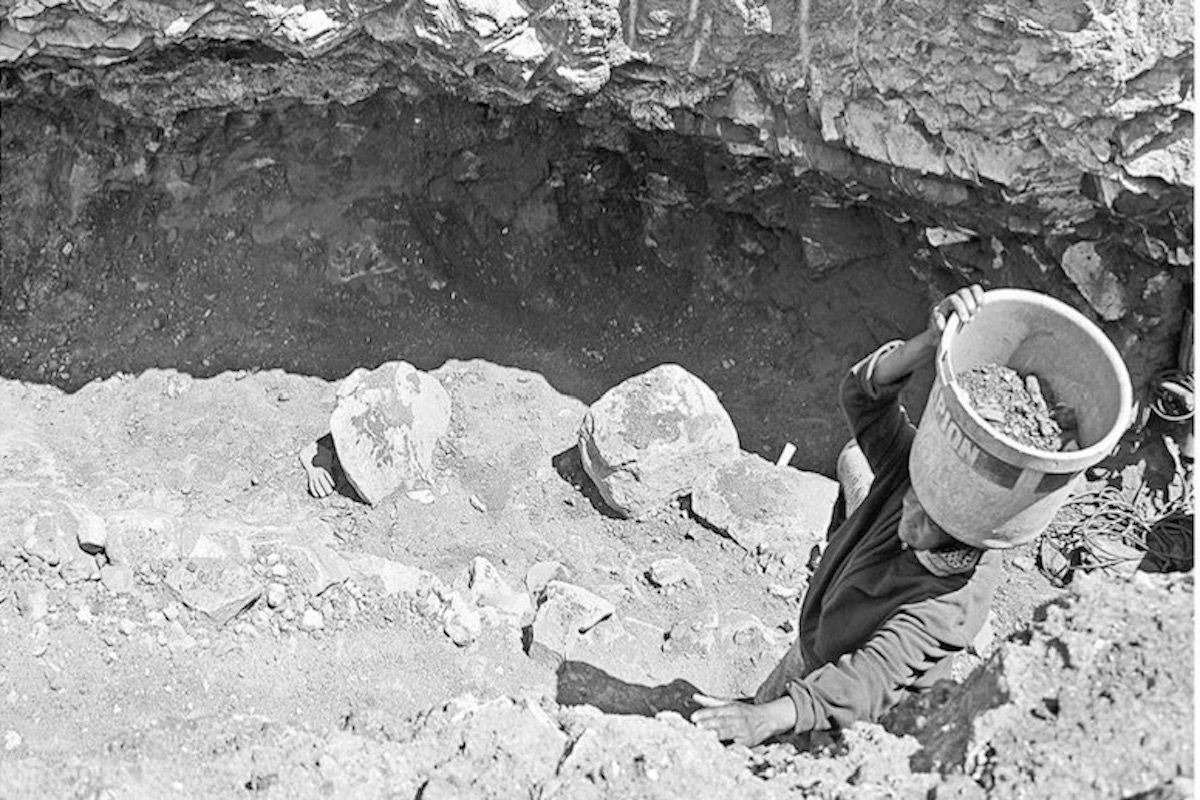Air pollution: The invisible enemy killing us day-by-day
Have you ever thought that air pollution is something that's not affecting you directly? Then you need to take a look at what the WHO report says.
Chromium, the metal, is a major pollutant impacting air, surface water, groundwater, soil and human health. It was first introduced in steel plants during the colonial period in 1865 and its use became prominent in leather industries since 1884

Chromium is essential for steel, electroplating and tannery industries. However, it is known to cause serious human health hazards. Hexavalent chromium is known to be carcinogenic. In the recent Eluru outbreak at Andhra Pradesh, nickel and lead were found in the bloodstream of suffering patients. These are heavy metals with health impacts similar to chromium. Unidentified chromium-linked illnesses like chronic kidney disease are reported in Indian agricultural communities. Sukinda chromite mines, Odisha – supplying 97 per cent of India’s chromium – and Kanpur, Uttar Pradesh, known for its chromium intensive tannery units, have reported diseases linked to chromium contamination.
Chromium, the metal, is a major pollutant impacting air, surface water, groundwater, soil and human health. It was first introduced in steel plants during the colonial period in 1865 and its use became prominent in leather industries since 1884.The main source of chromium was ferrochrome ore whose mining started in India in 1906. Presently, India is the fourth largest producer of chromium after South Africa, Turkey and Kazakhstan. The ever-increasing demand has led to more use of this toxic metal, contaminating the air, water and soil in the process.
Advertisement
The Sukinda mines, in the state of Odisha, cater to the bulk of India’s need for chromium. A report of 2007 indicates that Sukinda valley is amongst the world’s 10 most polluted places, sharing the list with the likes of Chernobyl, which is known worldwide for its nuclear disaster. Hexavalent chromium exposures can result in cancers, swelling, asthmatic bronchitis, reproductive organ related issues, kidney and liver damage, eye ailments, skin irritation and ulceration.
Advertisement
The Norwegian government funded the ‘Orissa Voluntary Health Association (OVHA)’, which reported acute health problems in the Sukinda area in 1995. Around 85 per cent of deaths in the mining areas can be linked to chromium contamination. According to statistical reports, India’s chromium production has increased from 2.75 to 4.22 million metric tons between 2013 and 2019, putting more pressure on the mines and the surrounding environment.
Kanpur-Jajmau, in Uttar Pradesh, is a hotspot of hexavalent chromium contamination in groundwater, resulting from the tanning effluent discharges from over 350 leather operations. According to the Uttar Pradesh ENVIS centre report of 2017, about 45,000 tons of chromium contaminated wastes have been dumped in the villages surrounding the Kanpur- Jhansi highway. The colour of the area’s groundwater has turned yellow due to the contamination. Residents of these areas have reported digestive and dermatological disorders and hematological abnormalities linked with chromium toxicity.
The seriousness of this issue has compelled the courts to require the installment of chromium recovery units in the wastewater management system of the tanneries. Failure to comply with this regulation has resulted in closure of 23 leather units across the city in 2005 while 122 units were closed in August, 2019 to combat pollution issues.
The public outcry against the health impacts of chromium contamination can be traced back to the famous lawsuit raised against Pacific Gas and Electric Company which had dumped 370 million gallons of chromium-laced wastewater in the town of Hinkley, California between 1952 and 1966. The residents of the town were suffering from ailments typical of hexavalent chromium contamination. This was one of the largest class action lawsuits in the USA and was settled in 1996 with a compensation of USD 333 million. After this case, California became the first state to set the maximum concentration limit of this toxic element to 10 parts per billion.
Recent occurrences of unidentified diseases and organ failures are featuring in news headlines. A news report dated 8 December 2020 reported one death and 560 people suffering from symptoms like epilepsy bouts, fainting, nausea, anxiety, and headache in Eluru, Andhra Pradesh. In this case most of the patients had elevated concentration of nickel and lead contamination in their blood, which is a similar type of metal contaminant to chromium.
An investigation by the Uttar Pradesh Pollution Control Board (UPPCB) reported that groundwater samples collected at Raj Nagar residential area indicated presence of hexavalent chromium well above the prescribed limit. A scientific investigation report of 2019 indicated the occurrence of kidney disease of unknown origin in agricultural communities across the states of Andhra Pradesh, Odisha, Goa, and Maharashtra. Chromium and other heavy metals have already been identified as major causes of kidney disease worldwide.
Industrial demands are spewing alarming amounts of toxic substances in our environment that are having unforeseen consequences on human health and quality of life. Health hazards resulting from toxic metal contaminations need to be identified and policies need to be formulated to regulate the use of these substances notwithstanding economic consequences. In the debate between economic development and improving human health conditions, the latter must have precedence.
The writers are, respectively, an independent researcher, an Assistant Professor and Dean at Jindal School of Environment and Sustainability, O.P. Jindal Global University, Sonipat, Haryana
Advertisement